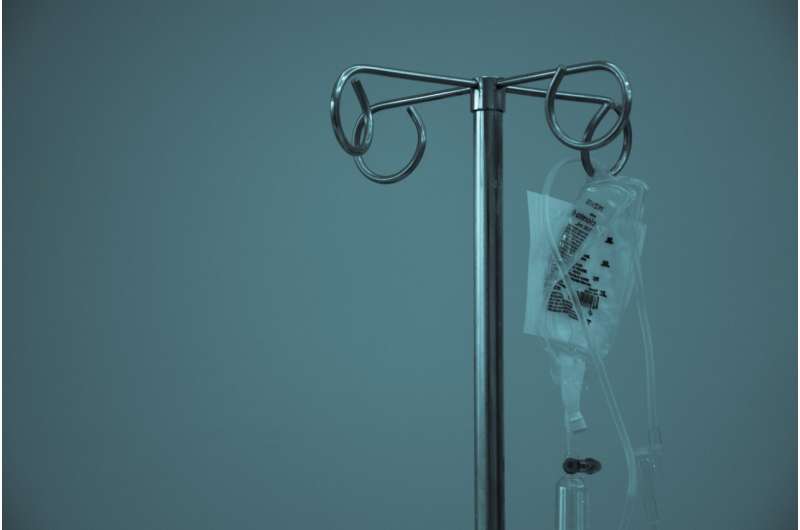This article has been reviewed according to Science X's editorial process and policies. Editors have highlighted the following attributes while ensuring the content's credibility:
fact-checked
peer-reviewed publication
trusted source
proofread
Critical care specialists debate best management strategy for sepsis and septic shock

In a new "Beyond the Guidelines" feature, two critical care specialists discuss and debate conditional guideline recommendations on using lactate to guide resuscitation, the use of balanced crystalloids versus normal saline, and the use of corticosteroids for management of sepsis and septic shock. All "Beyond the Guidelines" features are based on the Department of Medicine Grand Rounds at Beth Israel Deaconess Medical Center (BIDMC) in Boston and include print, video, and educational components published in the Annals of Internal Medicine.
Sepsis is a potentially life-threatening systemic dysregulatory response to infection, and septic shock occurs when sepsis leads to systemic vasodilatation and subsequent tissue hypoperfusion. In 2021, the Surviving Sepsis Campaign published updated guidelines on the management of sepsis and septic shock. Although these guidelines provide a useful review of key recommendations and evidence, some issues remain incompletely resolved.
BIDMC Grand Round discussants Drs. Katherine Berg and Taison Bell recently debated several weak recommendations from the 2021 Surviving Sepsis Campaign guidelines with regard to the case of Ms. S., a 70-year-old woman with septic shock.
In their assessments, Dr. Berg finds lactate level testing to be a quick, inexpensive, and useful indirect measurement to assess illness severity and guide resuscitation. Dr. Bell prefers to rely on dynamic assessments of intravascular volume status to guide fluid resuscitation.
Dr. Berg favors balanced crystalloids (BCs) for resuscitation, especially for patients with acute kidney injury (AKI), such as Ms. S. Dr. Bell believes the debate over fluid choice is less important than otherwise perceived both because of the general trend toward less fluid resuscitation in critical illness and because of the inconsistent results in trials comparing BCs to normal saline.
Dr. Berg does not routinely employ corticosteroids in the first 24 hours in patients in whom shock is stable or improving, but when necessary prefers a regimen of hydrocortisone plus fludrocortisone given the strongest data associated with this combination. Dr. Bell finds corticosteroids to be beneficial due to the improvement in important outcomes like time receiving vasopressors, duration of mechanical ventilation, and ICU length-of-stay.
More information: Zahir Kanjee et al, How Would You Resuscitate This Patient With Septic Shock?, Annals of Internal Medicine (2023). DOI: 10.7326/M22-3385



















